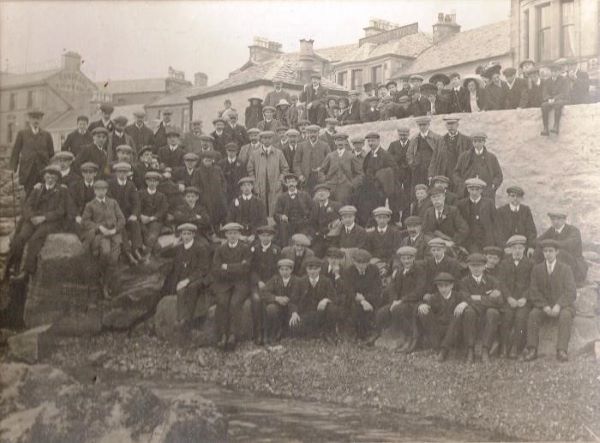

Working at Shanks
Working at Shanks
During the late 18th and 19th century, many people in Barrhead had been dependent on the prosperity of the textile industry. As this industry declined, it was fortunate for the town that new heavy and manufacturing industries began to prosper, and provide an alternative source of employment for both unskilled and skilled workers.
Shanks & Co. became a major employer in Barrhead. The different departments required people with a range of skills as well as foremen, management, office and support staff. A glance through the 1901 census for the area reveals many occupations probably linked to the works; foundry workers, iron moulders, brass finishers, cabinet makers, pottery glazers, bath enamellers and cistern fitters to name but a handful. By 1959, Shanks had a workforce of 1600.
It was possible to work your way up through the company from humble beginnings, as demonstrated by the career of William Kincaid, the son of a cistern fitter, who began as an office boy, then moved on to become personal assistant to P. B. Grandison. This led to his qualification as a Fellow of the Chartered Institute of Secretaries and finally the position of Company Secretary.
As well as providing people with a place of work, the business was also a focal point for social activities. Many interest clubs formed over the years and workers organised day trips and social events.

(image courtesy of Robert Burns)
An early example was the Glee club, formed in 1897, as part of a scheme by Shanks & Co. for the education and improvement of their workmen. During 1887-1888, it gave very successful concerts in connection with the local institutions and charities in Barrhead. A choir of 70 appeared at the 1888 International Exhibition conducted by William Shanks.
In the summer of 1949, the sports ground was opened. To celebrate, a series of events took place including a tennis tournament, a hockey match and a tug-of-war, all of which was reported in the Barrhead News.
